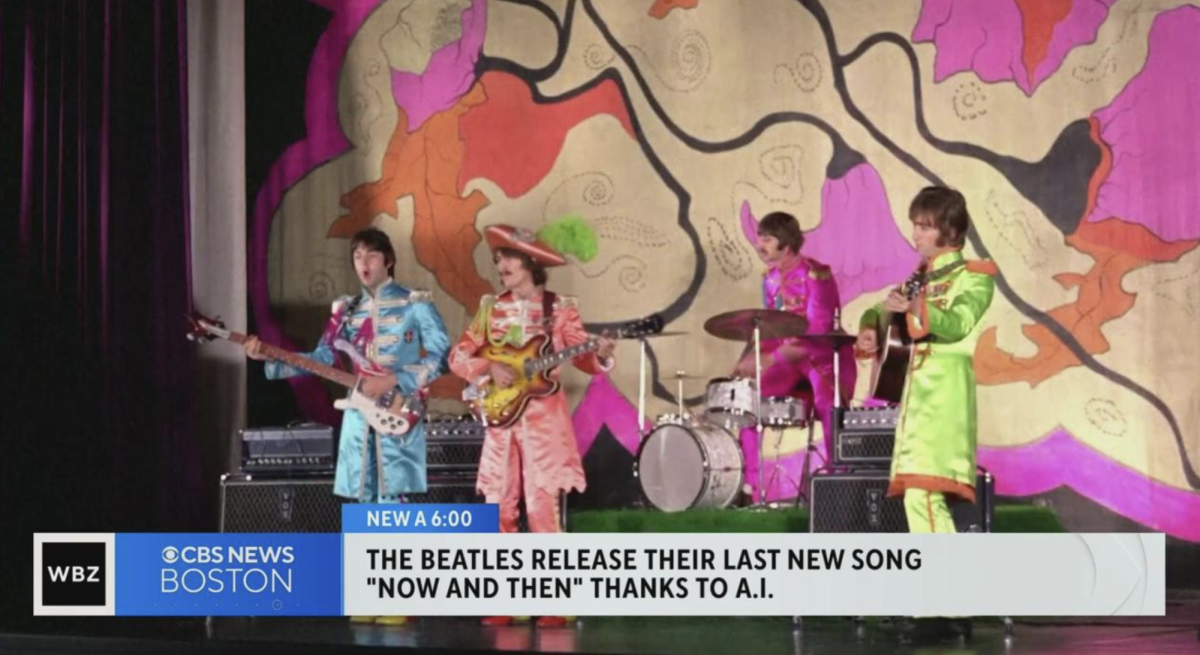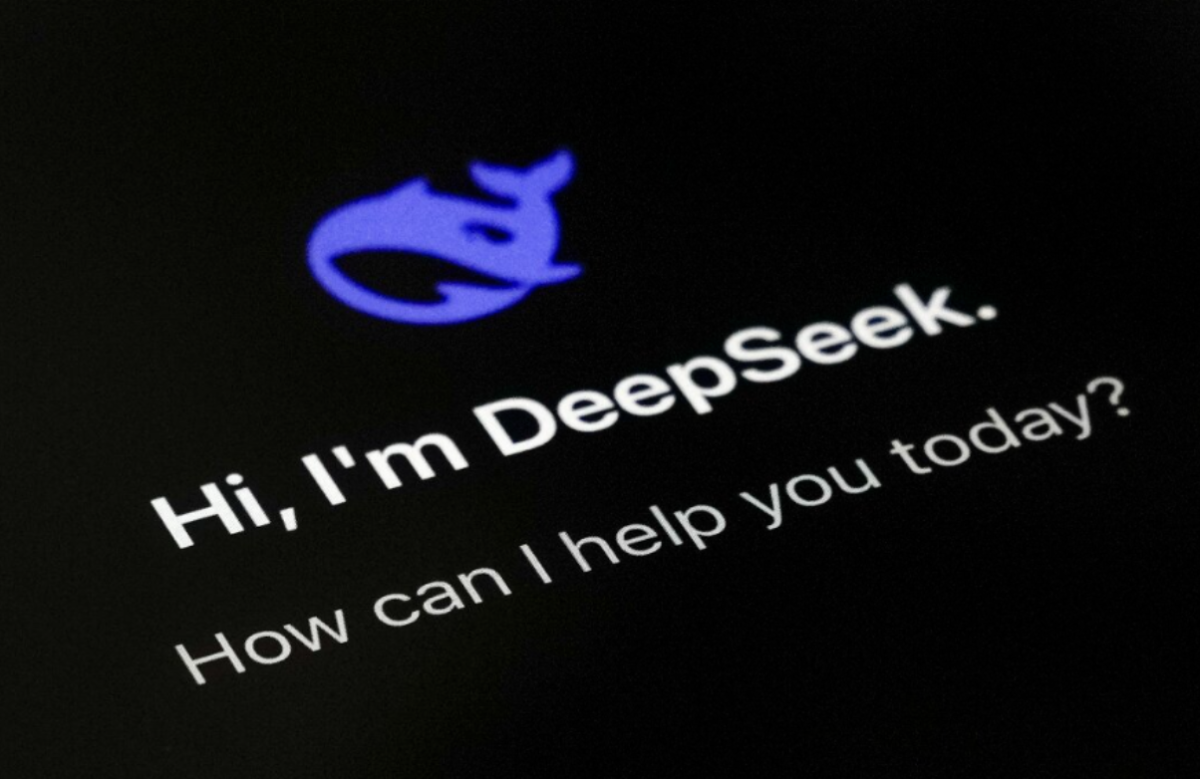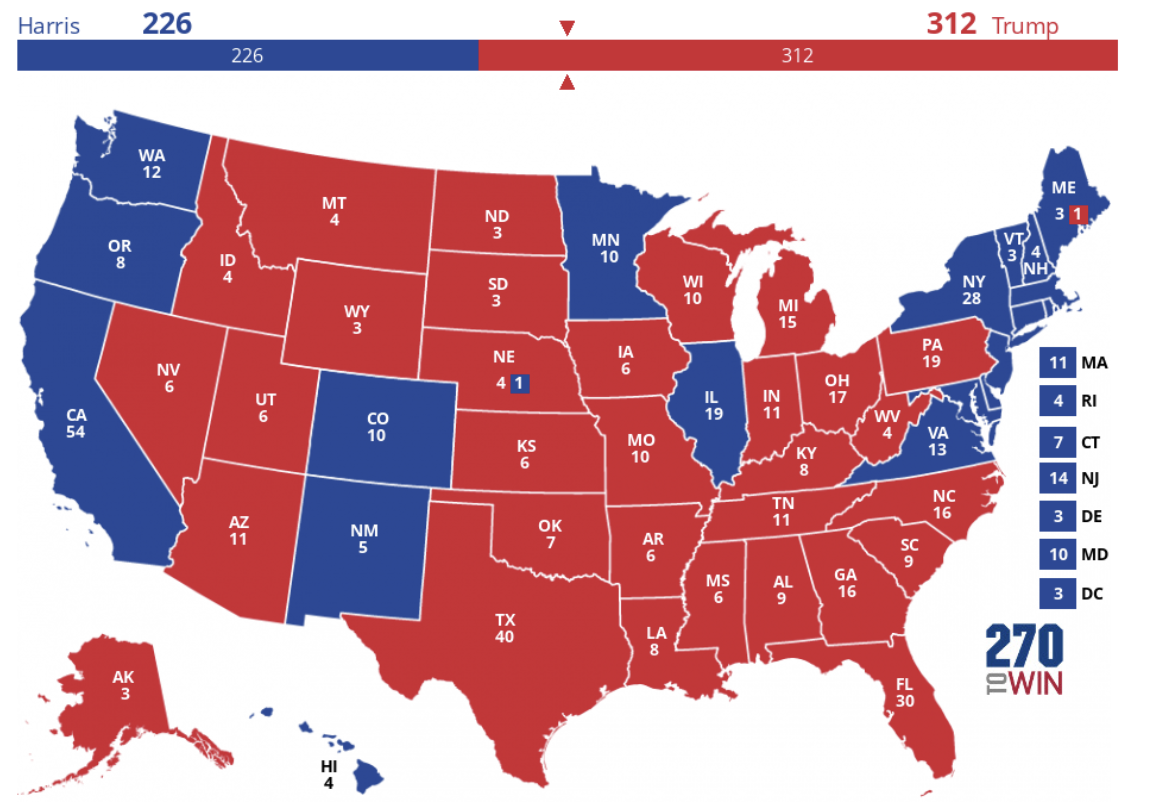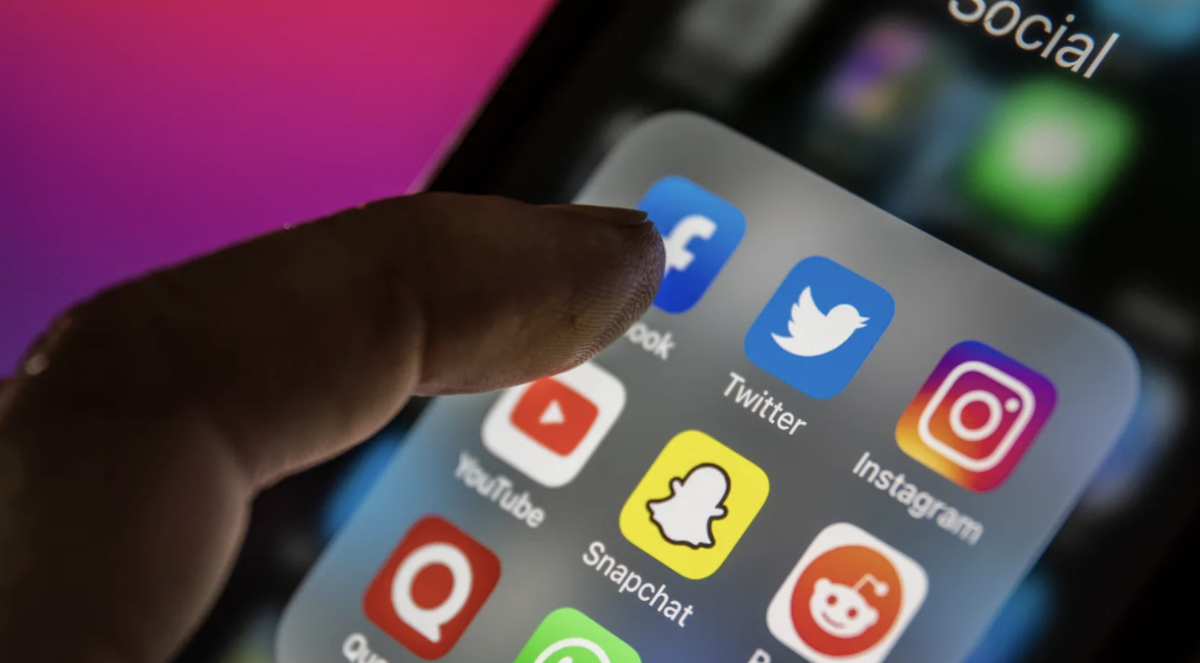On Nov. 2, 2023, the remaining members of the Beatles released their last new song, “Now and Then.” Despite having broken up in the early 1970s, surviving band members came together to produce what was initially a John Lennon’s song, revamped as a Beatles’ one, with the help of artificial intelligence.
The Beatles were a British band, featuring vocalists John Lennon and Paul McCartney, guitarist George Harrison, and drummer Ringo Starr. They formed in 1960, bonded by their mutual love for American rock and roll. They released their chart-topping debut album, Please Please Me, in 1963 and continued to release successful studio albums, such as Abbey Road and Yellow Submarine, until they disbanded in the early seventies.
Throughout their success, they proved to have a significant impact on pop culture. They not only left their mark on young minds, who were inspired by the band’s fashion, humor, and behavior, but they also made their way to the United States, where many television broadcasting stations featured their music.
“I don’t really listen to that kind of music, but I definitely know about [the Beatles],” said sophomore Rumana Shash. “It’s probably one of the first bands that I got introduced to when I was younger.”
Following their eventual break up, Lennon continued to create demos, singles, and even full albums. “Now and Then” was originally written and sung by Lennon as a solo tape, but by the time of his death in 1980, the song was never finished or published. McCartney received a copy of Lennon’s demo, so he and Starr utilized it to complete what Lennon had started.
Initially, Lennon’s recording contained piano parts in the background that could not be removed, resulting in the band scrapping the project. They realized years later that they could use the help of modern-day technology to complete the track. McCartney, Starr, and other tech-savvy team members were able to pick the song up again. With AI, they could take layers of music and separate the different parts of the audio, resulting in clear, individual tracks. With these devices, they were able to separate Lennon’s voice from background noises and improve the quality of the audio. However, they had to use recordings for Harrison’s guitar parts, because by the time they began working on the song again, Harrison had also died.
“Essentially, the use of AI to make [the song] current and make it sound like a more modern recording is kind of the unique part of it,” said Upper School band director Will Pitts.
Generally, the use of AI in art, visual and musical alike, brings up the question of morality. It has been used to generate replicas or create fake songs and pieces of art, and in many cases, sold for profit. For example, someone could use AI to create a song that sounds like it was written, sung, and produced by a popular band or artist like the Beatles, and publish the song to music streaming apps, such as SoundCloud or TikTok, where each stream generates revenue.
On the contrary, many use it for personal purposes that do not involve earnings or publication.
“[I think] it’s okay as long as people aren’t making money off of [AI produced songs],” said sophomore Kamren Maithel. “You can release it for people to listen to, but you can’t release it as an official song.”
“Now and Then,” however, was almost entirely created by the Beatles and their team, so many believe that the use of AI was merely a means to complete what Lennon began.
“Using AI to help separate the layers and create something new makes the song unique,” said Pitts.
Although the song raises no moral concerns, questions about the authenticity of the song are brought up. While the song does not use AI to artificially produce Lennon’s voice or Harrison’s guitar, a bulk of the creation of the song is thanks to AI. As a result, many fans still think that “Now and Then” cannot be considered a true Beatles song. Since Lennon’s parts consisted entirely of remastered recordings from the seventies, some avid Beatles listeners reject the idea that the song is similar to reunion songs that the band has recorded.
“They didn’t use AI to fabricate his voice…this was a song that he wrote, just nothing ever came of it…. They didn’t necessarily create it all together in the room, so it’s maybe not the same,” said Pitts.
But others suggest the opposite, claiming that Lennon’s recordings are what make the song a Beatles song.
“I think because it’s still John Lennon’s voice in the song that it’s fine,” said Shash. “It’s not like they’re using AI to fully recreate his voice.”
The dedication to create a unique piece of music from mostly old recordings and some help from AI is more commonly thought of as an homage to John Lennon.
“I think it’s a great tribute,” said Pitts.
Edited by Andrew Su




